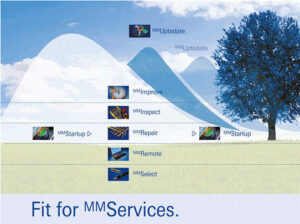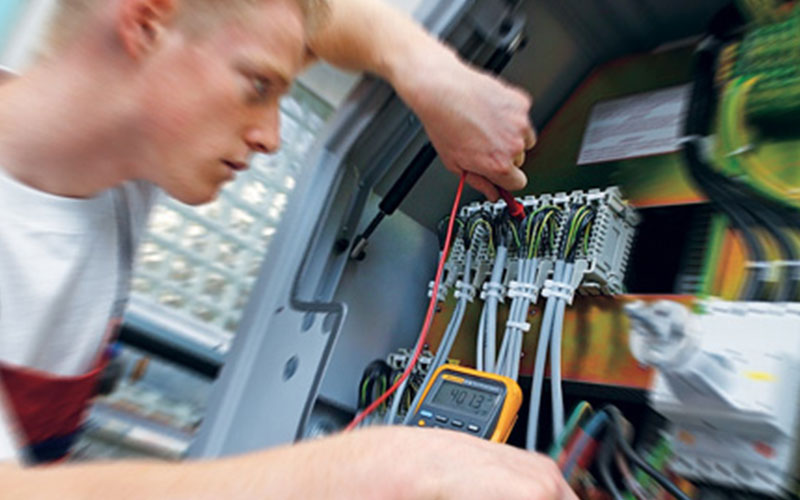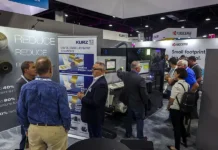By Dan Denue, vice president, operations, Muller Martini
Bindery equipment represents a significant capital investment. And, to ensure its long-term productivity, these assets must be continually nurtured and maintained, from installation to decommissioning. The most effective, results-driven approach is through lifecycle management (LCM).
Every machine has a lifecycle – a period of time where it produces at acceptable baseline levels. Properly managing bindery equipment’s lifespan begins with a dedicated commitment to a lifecycle management program, one that not only helps users achieve realistic performance expectations as the equipment ages, but also fosters a “no surprises” transition to newer assets.
The lifecycles of most machines can be pre-determined by the original equipment manufacturer (OEM), which can provide a comprehensive roadmap that details what needs doing and when. Since the OEM designed and engineered the machine, the OEM has the unique experience, ability and resources to forecast what to expect from the equipment – and how to realize those expectations even as the machine ages.
LCM keeps businesses apprised of what’s ahead

after-market programs to keep equipment
performing throughout their life cycles.
Time impacts the performance of every functioning machine, even newest generations featuring leading-edge technology. Automation, driven by electronics and software, began appearing in bindery equipment in the mid-90s. That alone made obsolescence inevitable as technology and intelligence constantly is being innovated and improved. And, although binders built in the 80s and early 90s are predominately mechanical in nature, they too are susceptible to obsolescence. Yes, suppliers often can construct new mechanical parts, but, sooner or later, that becomes both cost and time prohibitive. Add to that technicians experienced in servicing legacy machines who become harder to find or in limited supply.
Effects of ignoring regular maintenance
In today’s evolving print landscape, there’s a tendency to utilize short-term approaches that are focused on immediate costs or whatever’s disposable. But taking a “run to failure” approach is both unrealistic and costly simply because it avoids the fact that certain functionality may be inoperable and unavailable in the future. Yes, binders can and do last decades. But unfavorable outcomes eventually will ensue, for instance:
- Missed opportunities. Proper lifecycle management, particularly with older equipment, often uncovers opportunities that actually can increase a machine’s performance and/or productivity. By lowering expectations, companies can miss out on new opportunities to grow business.
- Increased costs. Unplanned downtime more often than not results in emergency repairs and/or replacement. Oftentimes, those costs are higher than what would be paid when planned for through a proactive maintenance strategy.
- Lack of parts and other components. As mentioned, obsolescence simply is a reality as equipment becomes more digitized, less mechanical.
- Loss of secondary market value. Just because a company owns a legacy binder doesn’t mean it has little value on the open market. Quite the contrary. In an ever-changing economy, many facilities choose to upgrade their line with a reputable brand’s second-hand equipment. When that equipment has been maintained, its residual value increases significantly.
- Employee dissatisfaction. It’s hard enough to attract experienced labor in today’s market. However, turnover rate can be lessened if companies actively demonstrate to their employees an ongoing commitment to keeping machines running and performing optimally.
Conversely, a dedicated LCM program offers the following advantages:
- Ensures optimal machine performance even as the equipment – and its components – age. No one can stop the clock, but companies can employ strategies that help prolong the life span of their bindery fleet.
- Better aligns equipment needs with business goals. Being able to plan for machine enhancements and upgrades creates a clear, pre-determined path that’s beneficial to the bottom line.
- Forecasts the timing of equipment needs. A planned maintenance strategy takes advantage of seasonal shutdowns, thereby optimizing planned downtimes for both equipment and operators.
- Assists in the planful and systematic acquisition of new bindery equipment and/or disposal/sale of legacy machines. Being able to assess what the machine’s lifespan is today enables facts-based budgeting for future equipment purchases.
- Lessens employee angst. A reactive maintenance approach is sure to cause uncertainty and unnecessary stress to operators, technicians and financial staff. A dedicated LCM program eliminates the unknown and the anxiety it creates.
What to expect as finishing equipment ages
Machine lifecycle is fairly predictable and often is independent of the mechanical or computerized/electronic nature of the machine. Therefore, “staging” the equipment’s life offers clear expectations for the machine’s longevity, enabling companies to plan for its productivity, overhead and eventual replacement year by year. Typically, machine lifecycle stages are designated as:
- Active. The equipment is all-new or still is being manufactured. That means that upgrades, components and comprehensive service readily are available.
- Secure. In this stage, the equipment is no longer being manufactured. However, enhancements, upgrades, parts and support continue to readily be available.
- Limited. Here the equipment is no longer being produced, so only select enhancements, upgrades, parts and support are available.
- Obsolete. This final stage often encompasses equipment that was manufactured more than 20 years ago. Although best-effort support services are offered by the manufacturer, many enhancements and parts no longer are being produced.
An effective lifecycle management strategy does not just include planned maintenance but offers a variety of tools that contribute to a robust lifespan for bindery equipment.
The first step in effective lifecycle management? A strong partner
A successful lifecycle management program starts with the original equipment manufacturer (OEM), particularly those with proven reputation and longevity. After all, like the binders, companies need to rely on the OEM’s expertise, support and recommendations long after machine installation. A company’s LCM partner is there to help its team – from maintenance to systems to finance – proactively plan next steps, whether it’s upgrading a machine, securing an obsolete part or migrating to newer technology.
Moreover, not only do OEMs have insider knowledge regarding how to optimize productivity, they also have developed seasoned relationships with third-party suppliers that often are vital to the machine’s continued performance.
Lifecycle management: The key to long-term performance
Rapid technological innovations have forever changed how machines are designed and engineered. And, although these innovations have led to exceptionally automated finishing solutions that reduce labor demands, every advancement is ultimately revolutionized, producing even greater performance and efficiencies. Machine lifecycle management helps companies prepare for the predictable, enabling smarter and timelier decisions so they can continue to compete for the long-haul.
With more than 30 years of industry experience, Dan Denue is responsible for Muller Martini’s extensive service and parts offerings that include operational improvement programs, machine maintenance and upgrades, spare parts and information technology management. For more information, visit www.mullermartini.com.





